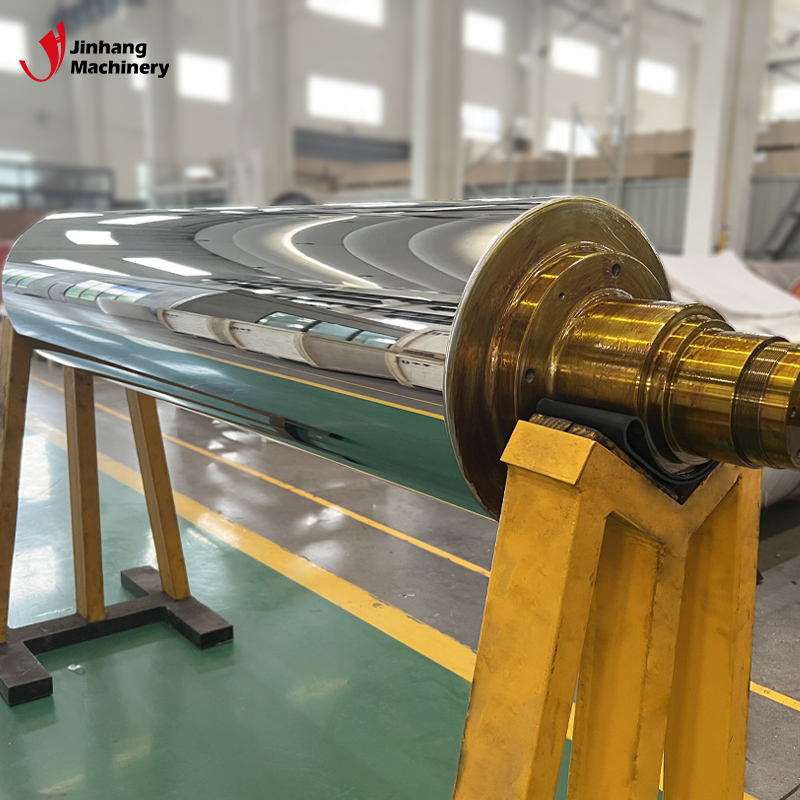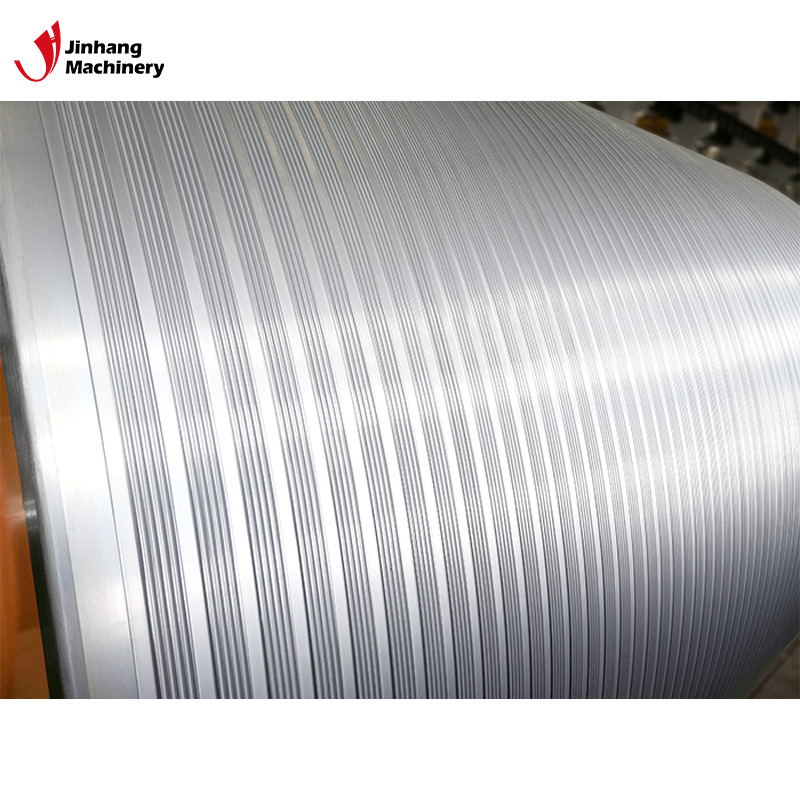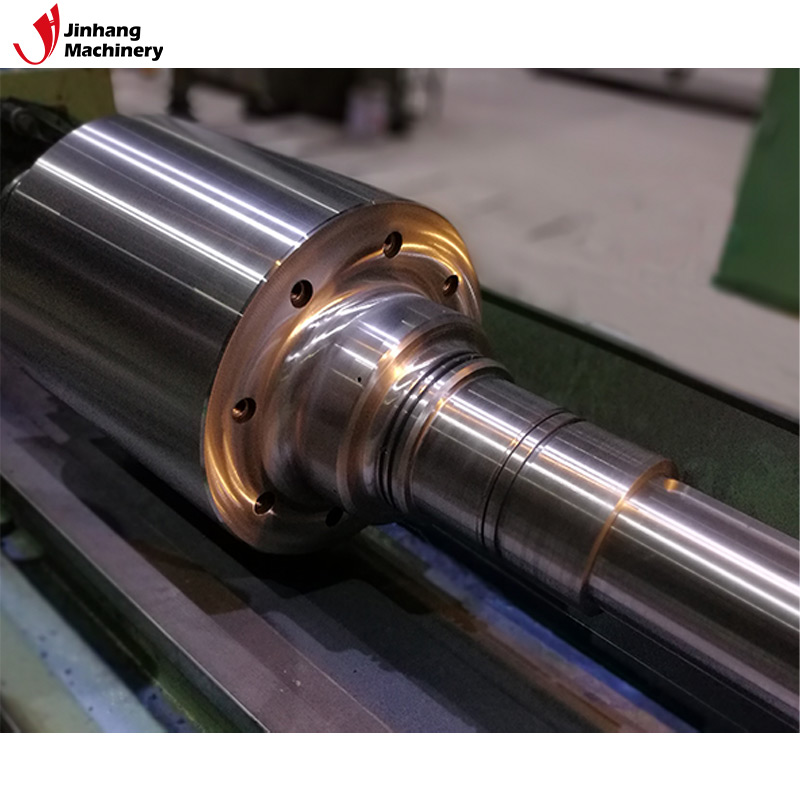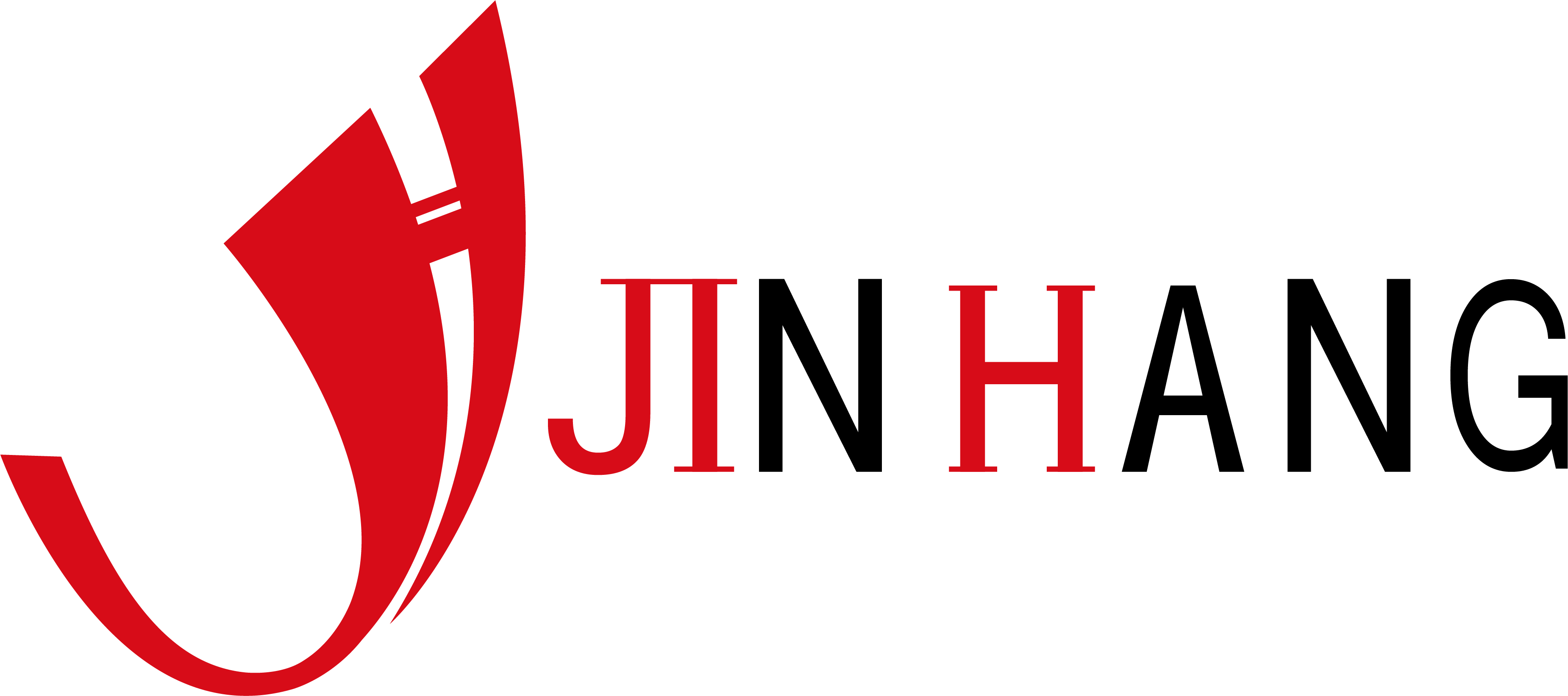What is the difference between chrome plated roller and mirror roller?
Industrial rollers are indispensable mechanical components in modern manufacturing processes and are widely used in many industries such as printing, papermaking, plastic processing, and textiles. In the manufacturing and use of industrial rollers, surface treatment is one of its core technologies. Two common surface treatment methods are chrome plated rollers and mirror rollers, each of which has unique advantages and characteristics. This article will explore the difference between chrome plated rollers and mirror surfaces in depth, and analyze the application of both in different industrial scenarios.
What is a chrome plated roller?
Chrome plated roller is a common industrial surface treatment technology that mainly deposits a layer of metallic chromium on the surface of the roller through an electroplating process. The electroplating process usually involves immersing the roller in an electrolytic cell containing a chromic acid solution, and then gradually depositing chromium ions on the roller surface through an electric current to form a strong and durable chrome plating layer.
The main characteristics of chrome plated rollers include:
● High hardness: The chrome plating layer usually has extremely high hardness, which can effectively prevent the roller from being worn due to friction and impact during use. Industrial chrome plated rollers typically have a hardness in the range of 900 to 1200 Vickers hardness (HV), which makes them very durable.
● Corrosion resistance: Chrome has good oxidation and corrosion resistance, which can protect the roller surface from chemicals in many harsh environments.
● Good lubricity: Chrome plated rollers have a relatively low coefficient of friction, which makes them suitable for applications that require low friction operation, such as high-speed paper processing or plastic film processing.
● High temperature resistance: Chrome plated rollers perform well in high temperature environments and can withstand temperature fluctuations without easily deforming or failing.
Due to these characteristics, chrome plated rollers are widely used in harsh industrial environments such as heavy loads, high friction, and high temperatures. It can significantly increase the service life of the roller and reduce the frequency of maintenance.

What is a mirror roller?
Mirror rollers are a surface treatment technology that uses mechanical polishing and grinding processes to achieve extremely high smoothness on the surface of industrial rollers. Mirror roller treatment does not involve chemical processes such as electroplating, but rather gradually eliminates small surface irregularities through continuous grinding and polishing until a near-mirror reflection effect is achieved. The mirror roller surface is commonly seen in high-demand fine processing fields such as plastic film, thin film, coating, printing, etc.
The main characteristics of the mirror roller include:
● Extremely high smoothness: The mirror roller surface is as smooth as a mirror, and the surface roughness is usually between 0.01 and 0.05 microns (Ra value). This high smoothness enables it to ensure the quality consistency of the surface material during the production process and avoid scratches, bubbles or other surface defects.
● Uniform pressure distribution: Due to the flat surface, the mirror roller can evenly distribute the pressure during the production process to ensure the thickness uniformity and finish of the processed materials such as films and coatings.
● No chemical coating: Unlike chrome plating, the mirror roller has no additional chemical coating, so it avoids problems such as coating peeling and shedding, making it more stable and reliable.
● Anti-adhesion: Due to the extremely smooth surface, the mirror roller is not easy to adhere to the material during the processing process, especially in coating, film extrusion, printing and other occasions where the material needs to be quickly separated from the roller.
Mirror rollers are mainly used in high-precision processing environments, such as areas where it is necessary to ensure the surface finish, uniformity and flawlessness of the product. It is often used in industrial applications that require extremely high surface quality, such as films, optical lenses, and food packaging.

Industrial rollers: What is the difference between chrome plated rollers and mirror rollers?
Manufacturing process
The biggest difference between chrome plated rollers and mirror rollers is their manufacturing process. Chrome plated rollers deposit a layer of chrome on the roller surface through an electroplating process, while mirror surfaces are smoothed by mechanical means such as polishing and grinding. Chrome plating requires multiple electroplating and electrolytic treatments, while mirror rollers gradually improve their surface finish through physical grinding.
● Chrome plating process: a chemical electroplating process that relies on electric current to deposit chrome on the surface of the substrate.
● Mirror process: a purely physical grinding and polishing process that does not involve chemical treatment.
Surface hardness
The hardness of chrome plated rollers is extremely high and is generally more wear-resistant than mirror rollers. This is because the molecular structure of the chrome plating layer is very dense and can resist wear caused by friction, impact, etc. in industrial processes. The hardness of the mirror surface depends on the substrate itself, as it is not covered with an additional hard coating. Therefore, chrome plated rollers have more advantages in heavy load or high friction environments.
● Chrome plating hardness: 900-1200 HV, extremely high wear resistance.
● Mirror hardness: depends on the roller substrate, usually not as hard as the chrome plating layer.
Corrosion resistance
Chrome plated rollers have high corrosion resistance, especially in industrial occasions such as chemical and papermaking that need to contact with corrosive liquids or gases. The chrome plating layer can effectively prevent the substrate from corrosion. The mirror roller surface does not have similar corrosion resistance. Without additional protection measures, the mirror roller will be more easily damaged than the chrome plated roller in a corrosive environment.
● Chrome plating corrosion resistance: excellent corrosion resistance, suitable for harsh environments.
● Mirror surface corrosion resistance: usually no additional anti-corrosion coating, need to be used in a clean environment.
Surface finish
The surface finish of the mirror roller is much higher than that of the chrome plated roller. Although the chrome plated roller can also achieve a relatively smooth surface after polishing, there is still a certain gap compared with the mirror roller. The surface of the mirror roller can reflect light, close to the reflection effect of a mirror, while the chrome roller cannot achieve such a high smoothness.
● Chrome plated finish: high, but cannot achieve mirror reflection effect.
● Mirror finish: extremely high, close to mirror reflection.
Application areas
Due to the different characteristics of these two surface treatments, they each have specific advantages in different industrial applications.
● Chrome plated roller: suitable for high load, high friction, high corrosion environment, such as steel, papermaking, plastic extrusion and other industries.
● Mirror surface: mainly used in industries requiring high precision and surface quality, such as film manufacturing, food packaging, optical device processing, etc.

How to choose the right surface treatment?
When choosing a chrome plated roller or a mirror surface, the specific working environment and requirements must be considered. Here are some selection references:
● Consider the harshness of the working environment: If there are high friction, high temperature, and highly corrosive substances in the working environment, the chrome plated roller has more advantages. If the material surface needs to be processed with high precision, such as coating or printing processes, the mirror surface is more suitable.
● Consider the surface quality requirements of the material: When the product requires a very high surface finish, the mirror roller is a better choice. Although the chrome plated roller is smooth, it cannot achieve the same smooth effect as the mirror roller.
● Durability and cost: Chrome plated rollers are generally more suitable for high-intensity environments due to their hardness and corrosion resistance, and can reduce the frequency of replacement and maintenance, although their manufacturing cost is higher. Mirror rollers are often used for fine processing, and their service life depends on the substrate and application environment.

High-Quality Industrial Rolls and Cylinders – Custom Made for Your Needs
Looking for durable and high-performance rolls for your industrial machines? Jiangsu Jinhao Machinery Manufacturing Co., Ltd. (JH Machinery) is a leading supplier specializing in the production of custom rolls designed for various industries. Our rolls come in a variety of shapes and sizes, including polyurethane, rubber, tungsten carbide-coated, and mirror rollers. With over 20 years of experience, we offer competitive prices and excellent after-sales support. Purchase directly from our China-based factory and benefit from affordable wholesale prices, bulk discounts, and quick delivery. Get in touch now for personalized quotes and explore our wide range of customized rolls.
